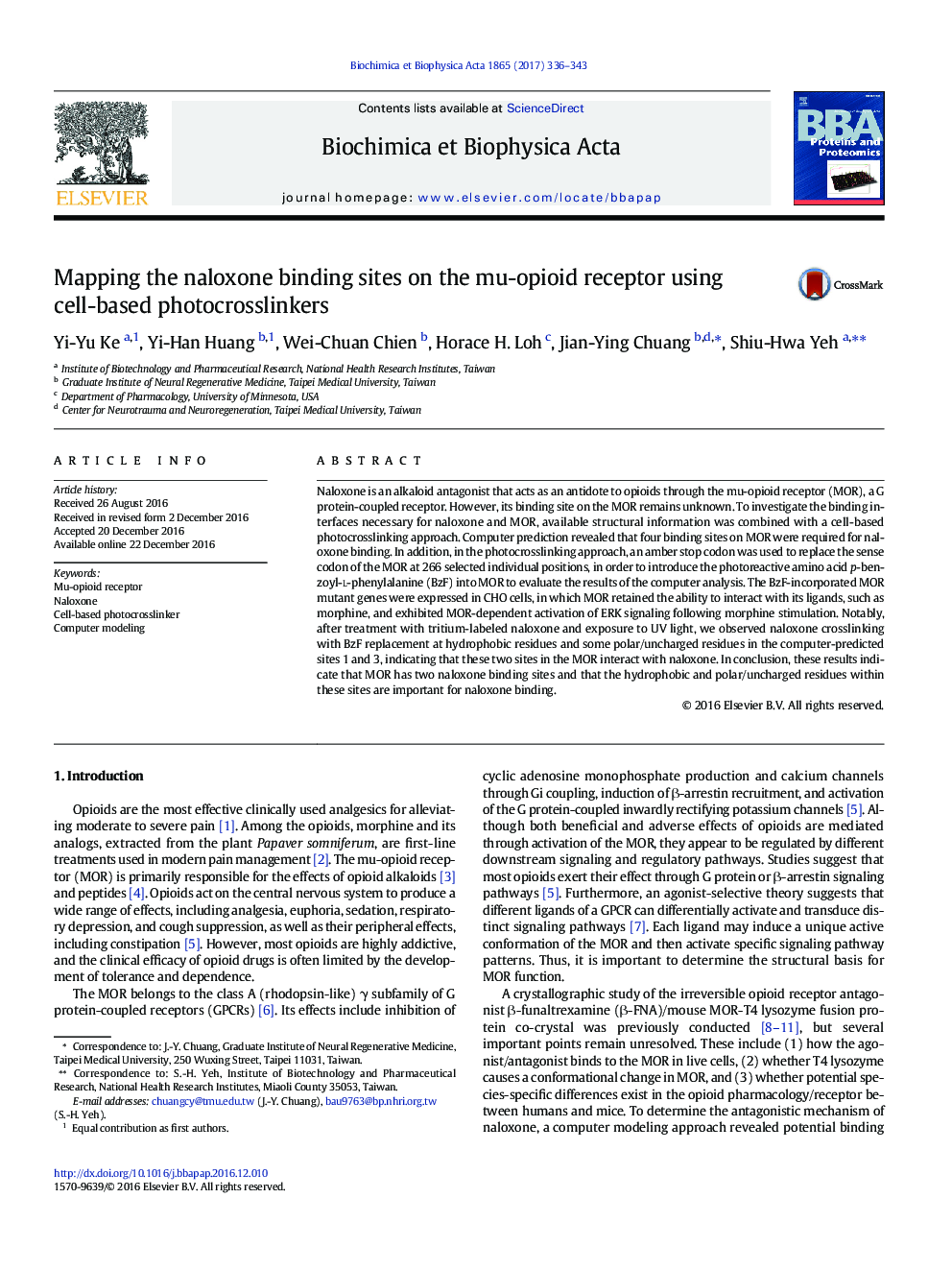| کد مقاله | کد نشریه | سال انتشار | مقاله انگلیسی | نسخه تمام متن |
|---|---|---|---|---|
| 5132014 | 1378787 | 2017 | 8 صفحه PDF | دانلود رایگان |

- A computer-modeling approach is used to predict the naloxone binding sites on MOR.
- Cell-based photocrosslinkers are used to map the naloxone binding sites on MOR.
- MOR has two naloxone binding sites.
- Naloxone binds to hydrophobic and uncharged residues within these sites of MOR.
Naloxone is an alkaloid antagonist that acts as an antidote to opioids through the mu-opioid receptor (MOR), a G protein-coupled receptor. However, its binding site on the MOR remains unknown. To investigate the binding interfaces necessary for naloxone and MOR, available structural information was combined with a cell-based photocrosslinking approach. Computer prediction revealed that four binding sites on MOR were required for naloxone binding. In addition, in the photocrosslinking approach, an amber stop codon was used to replace the sense codon of the MOR at 266 selected individual positions, in order to introduce the photoreactive amino acid p-benzoyl-l-phenylalanine (BzF) into MOR to evaluate the results of the computer analysis. The BzF-incorporated MOR mutant genes were expressed in CHO cells, in which MOR retained the ability to interact with its ligands, such as morphine, and exhibited MOR-dependent activation of ERK signaling following morphine stimulation. Notably, after treatment with tritium-labeled naloxone and exposure to UV light, we observed naloxone crosslinking with BzF replacement at hydrophobic residues and some polar/uncharged residues in the computer-predicted sites 1 and 3, indicating that these two sites in the MOR interact with naloxone. In conclusion, these results indicate that MOR has two naloxone binding sites and that the hydrophobic and polar/uncharged residues within these sites are important for naloxone binding.
Journal: Biochimica et Biophysica Acta (BBA) - Proteins and Proteomics - Volume 1865, Issue 3, March 2017, Pages 336-343